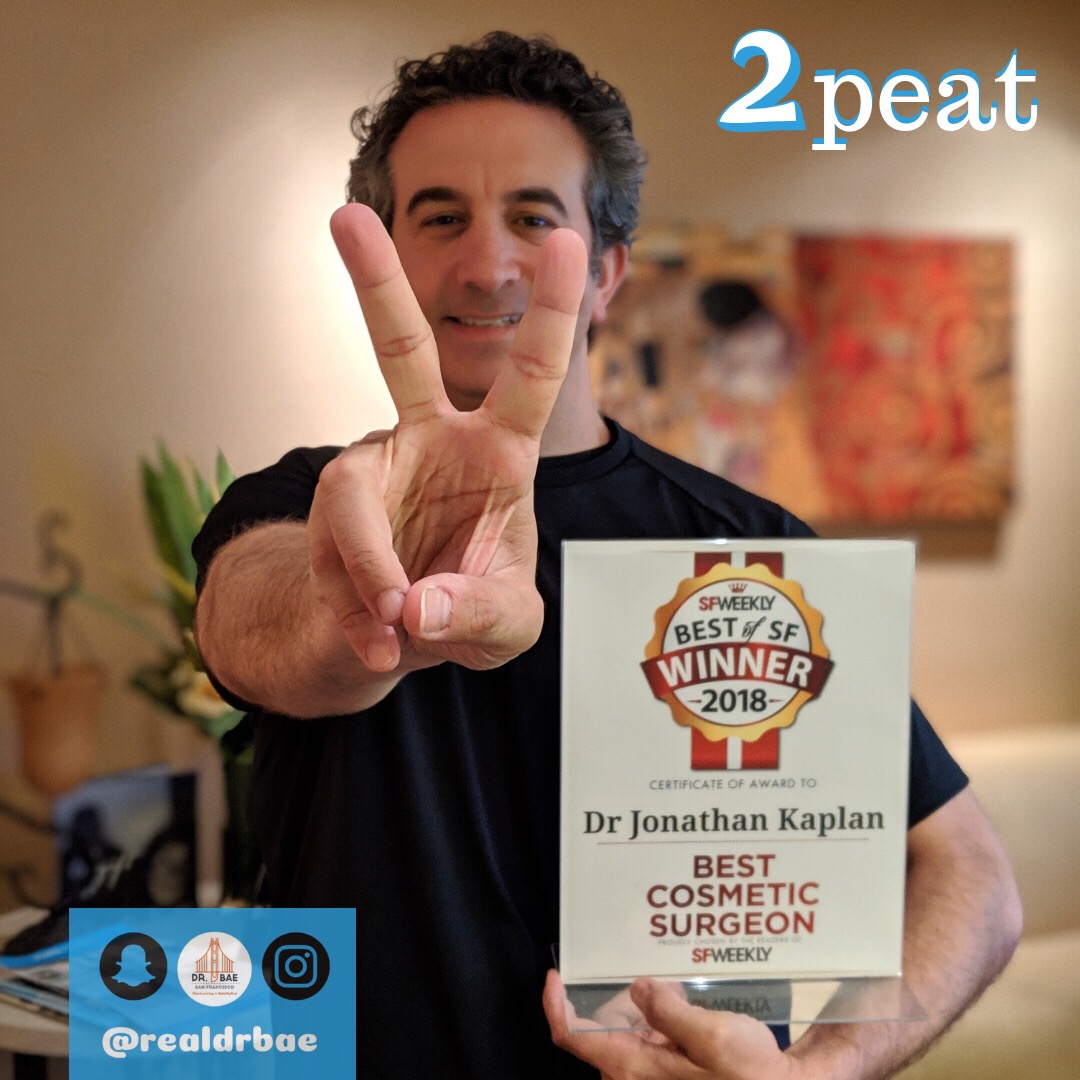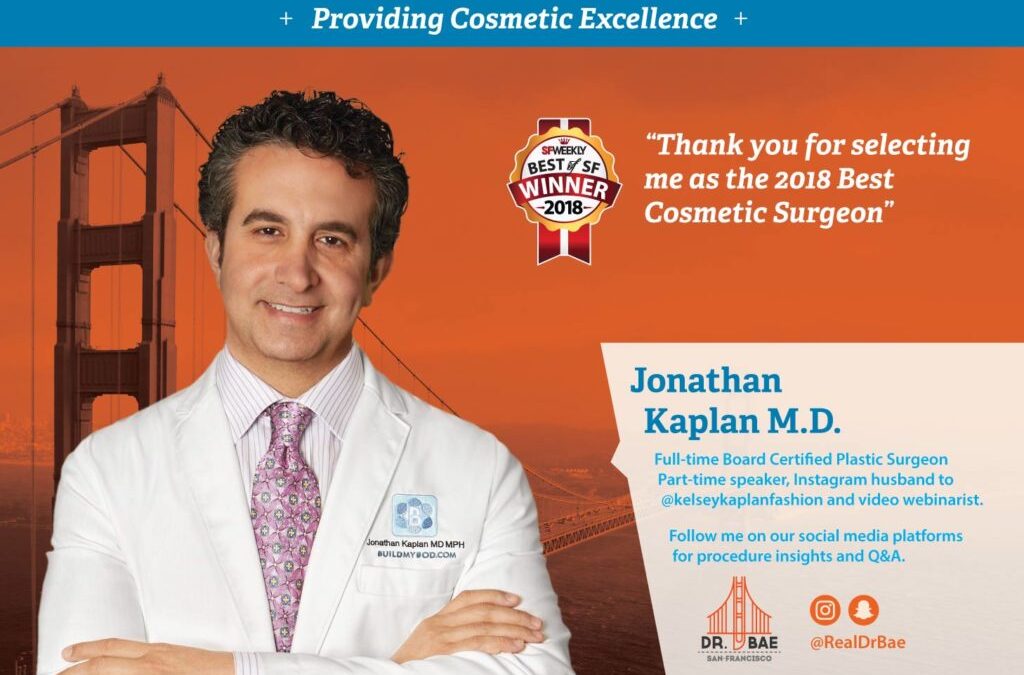Dr. Jonathan Kaplan is a board-certified plastic surgeon who specializes in cosmetic surgery. With an impressive background and years of experience, Dr. Kaplan has made a name for himself as one of the best cosmetic surgeons in the Bay Area. His goal is to make his patients look and feel amazing with his innovative approach to surgery. In this interview, Health & Beauty Cosmos discussed his education, how his practice developed, and his app that makes patient lives easier.
This interview was conducted via email.
Health & Beauty Cosmos: Tell me a little about yourself before opening your practice.
Dr. Jonathan Kaplan: I’m the youngest of seven kids from Alexandria, Louisiana. I went to UT Austin for undergrad, and then back to Louisiana for med school and general surgery residency at LSU in New Orleans, and then did my plastic surgery fellowship at the Cleveland Clinic. I practiced as an employed physician at Our Lady of the Lake Regional Medical Center in Baton Rouge for 6 years after my fellowship, and then moved to San Francisco.
HBC: What made you decide that you wanted to work in the field of plastic surgery?
Dr. K: My Dad was a general surgeon back home and I started going to the OR with him when I was 11. At the age of 16, as I was about to go into the OR with him, a plastic surgeon asked if I wanted to see him remove a skin cancer and reconstruct the “hole” with skin from the patient’s neck. That ability to use one part of the body to fix another got me hooked on plastic surgery.
HBC: When did you know you wanted to open your own practice instead of work under another doctor?
Dr. K: The hospital in Baton Rouge treated me well since I was the first plastic surgeon they hired, but as I started getting more cosmetic patients that wanted a more “VIP experience” like an office-based operating room rather than going to a surgery center or hospital, I knew I wanted my own OR. The hospital wasn’t going to build me my own operating room since cosmetics wasn’t their specialty, so I started looking for opportunities where I could have access to my own OR, be it as a partner in a private practice or my own practice, I wasn’t sure what I wanted until…

HBC: What inspired you to come back to California and open a practice in the Bay Area after your start in Baton Rouge?
Dr. K: During my job search, I found a job listing on the American Society of Plastic Surgery website for a practice in San Francisco with its own accredited OR. My wife and I went to check it out. It was legit. After an evaluation of the practice’s finances by my attorney, we made an offer and the selling physician accepted.
HBC: What procedures do you specialize in?
Dr. K: 100% cosmetics. That translates into Mommy Makeovers (breast procedure and tummy tuck to return a mom back to her pre-pregnancy body), and Brazilian Butt Lifts (liposuction with injection of the harvest fat into the buttocks and “hip dips” to give the patient an hourglass figure. I also developed my own type of neck lift – the Single Incision Minimally Invasive (SIMI) neck lift that avoids the long scars behind the ears and only use the incision behind the chin to improve the neck line in appropriate candidates.
HBC: On average what is the difference between the services requested by clients in San Francisco and the services requested by clients in Baton Rouge?
Dr. K: Brazilian Butt Lifts (BBLs) are more common in the Bay Area than they were in Baton Rouge, but that may be because when I was in Baton Rouge from 2007 to 2013, BBLs were not a commonly requested procedure anywhere. They are much more common now with the rise of social media since 2013.

Credit: Pacific Heights
HBC: How has the industry evolved (technology, etc.) since you started?
Dr. K: There are so many more aesthetic devices that actually work than ever before. However, the risk of buying an aesthetic machine is that 1) it works, and then everyone buys one and the competition drives the price down or 2) it doesn’t work and it ends up being a waste of money. Either way, aesthetic machines are additional mortgages that may never pay off and provide the return on investment.
HBC: Tell us about what BuildMyBod Health is, as well as a little about its development.
Dr. K: Every patient wants to know cost. They always call the office asking about price. Most front desk representatives are taught to never give out price which frustrates the consumer. They just want to know if it’s worth spending the time and money to divulge their deepest insecurities during a consultation. They don’t want to find out at the end that it’s out of their budget. BuildMyBod Health, a company I founded, provides consumers with automated pricing information through the doctor’s website but only after the consumer enters their contact information. So the consumer gets the hard-to-find pricing information they want specific to the procedure and doctor, and the doctor gets a lead for follow up! The BuildMyBod Health Price Estimator is embedded into the doctor’s website, allowing the consumer to quickly and easily determine whether a procedure is within their budget. And once the doctor’s office receives the consumer’s contact info, they can follow up and answer questions and assist in scheduling a consultation.

Credit: 99.7 NOW
HBC: What is the most satisfying thing about the work you do?
Dr. K: I love how after you operate on someone, that even though they wake up in pain, they thank you for the work you’ve done because they can see and appreciate the results immediately. Since we record the procedures and post on Snapchat and Instagram Stories with the patient’s permission, they can watch the operation from the recovery room. It’s so great to see they tear of joy when they watch the transformation they just went through.
HBC: What role does philanthropy play in your life, as well as the life of your practice?
Dr. K: My parents taught me from an early age, and they led by example, to find a charity you believe in and donate. And it doesn’t always have to be huge one-time gifts. Better that its monthly recurring, manageable amounts that grow over time to be large contributions.
HBC: What is the one piece of advice you would give to med students who own a practice of their own?
Dr. K: If you’re coming out of training and thinking about buying a practice, don’t. You don’t really know what you want yet. Consider working as an employed physician which requires no outlay of capital and no costly buy-ins. Use those first few years to find out what you want in your career and then make a move based on what you’ve learned about yourself.

